Donations by influential Hong Kong antiques dealer and collector include pieces unparalleled for their beauty, Zhang Kun reports.
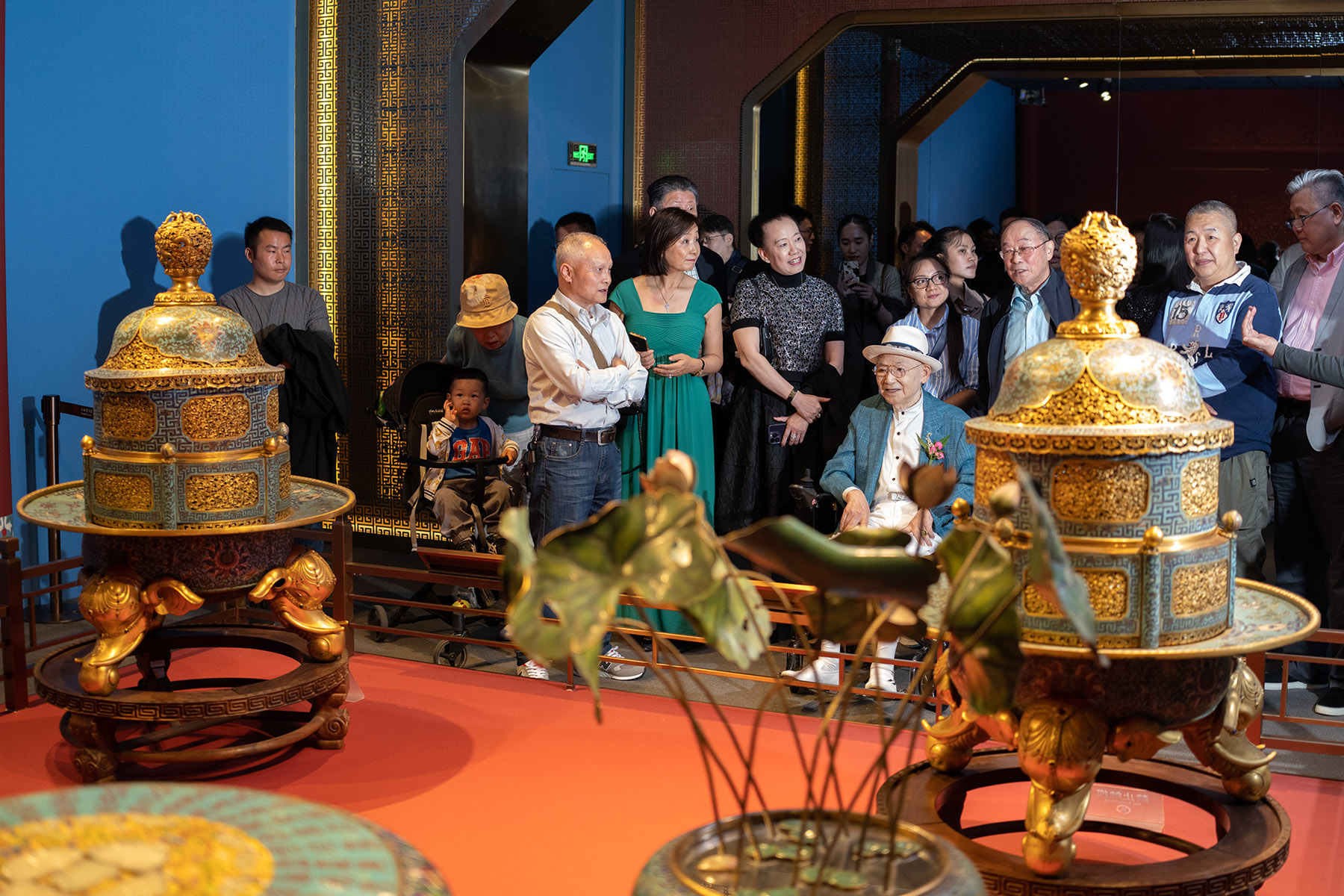
Thanks to the donations of a patriotic connoisseur, the Shanghai Museum has become one of the country's first public museums with a showroom dedicated to cloisonne enamel objects.
On May 8, the museum celebrated the opening of its new room and an exhibition, All that Glitters, which features 55 cloisonne pieces donated by Robert Chang, a 97-year-old collector of Chinese artifacts.
"In the future, I will make more donations, and I hope everyone will be able to gather here again then," he said from his wheelchair, clad in a blue linen jacket, elegant white trousers and a smart white fedora.
"I began to collect fine cloisonne objects in my 40s, and now all of them are in the Shanghai Museum," Chang says.
READ MORE: Close up on cloisonne
"I will keep on supporting the Shanghai Museum for the remaining days of my life. People all over the world who love cloisonne will come to the museum and learn about the great civilization of China," Chang says. "We've had top-class culture, art and education for millennia … I hope one day students from all over the world will come to study here and be fascinated by the glorious history of China."
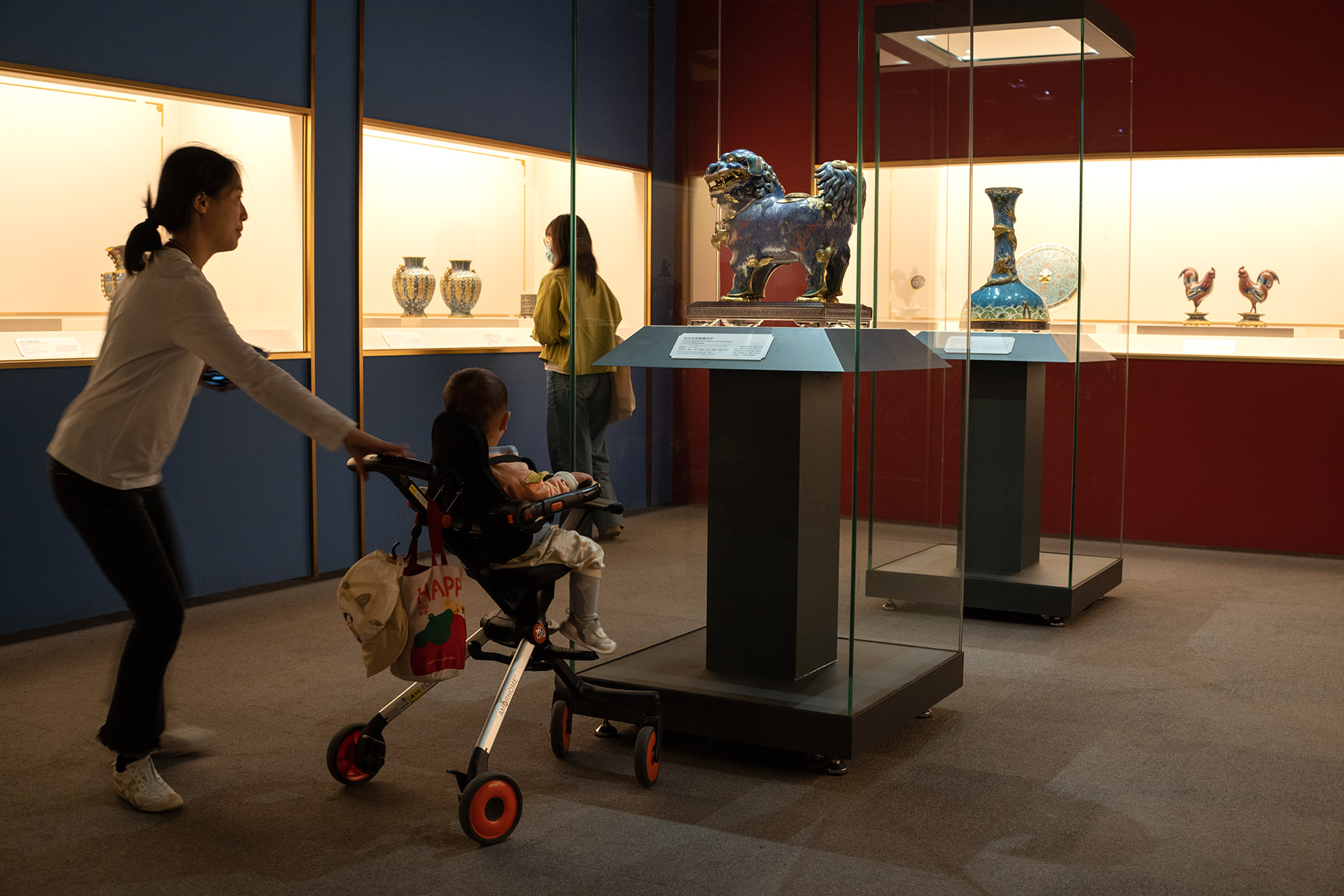
Chang was born to a family with a long background in art and antiques in Changzhou, Jiangsu province, in 1927. His grandfather Zhang Jiru, was a famous bamboo carving artist, and his father Zhang Zhongying, a renowned antique dealer in Shanghai in the early 1900s. In 1948 Chang moved to Hong Kong to found his own antique shop, Yong Yuan Hang, in the 1950s.
He was one of the first Chinese to attend international auctions in the 1960s.
Nicolas Chow, the former international head and chairman of Chinese art at Sotheby's, writes in a column that "auctioneers in Hong Kong, Paris, London, New York, Tokyo and Beijing will not wield their gavel until Robert Chang has made his theatrical entrance, center aisle, and has taken his favorite seat at the front row, paddle 001 at the ready".
As an important collector, Chang exerted significant influence on the collection of ancient Chinese art and auctioneering, both in China and abroad, according to Chu Xiaobo, director of the Shanghai Museum, and also played a pivotal role in turning Hong Kong into a prominent trading center for Chinese art in the latter half of the 20th century.
"When Julian Thompson, the late chairman of Sotheby's, brought groundbreaking auctions to the city in 1973, his first port of call was Robert, who supplied hundreds of pieces to his early sales," Chow writes.
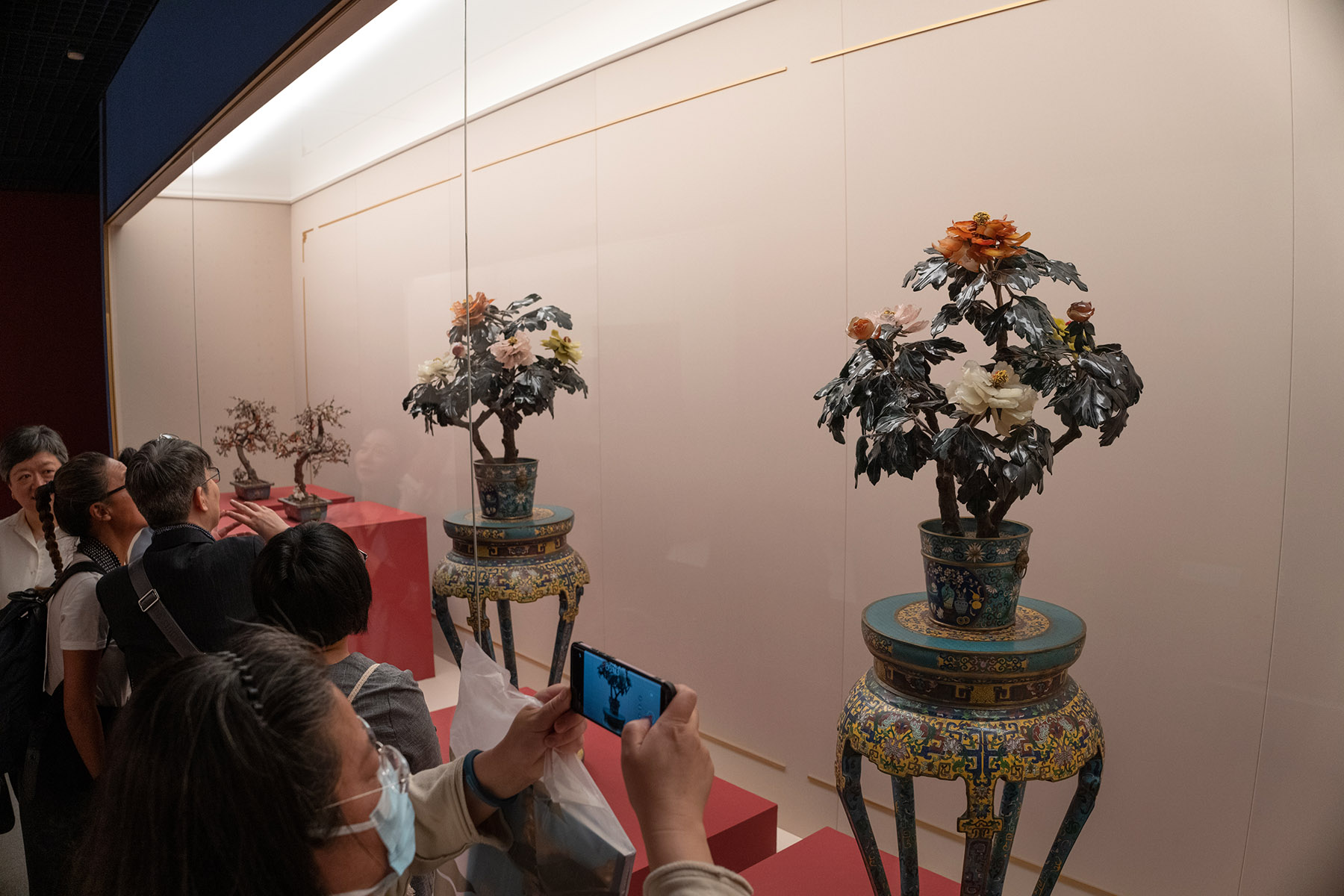
With his extensive collection of traditional calligraphy, Chinese paintings, jade and cloisonne enamelware, Chu says that Chang has significantly influenced and encouraged the focus of collectors worldwide on the collection and research of cloisonne enamelware from different historical periods.
"Upon learning about the relatively limited collection of cloisonne enamelware at the Shanghai Museum, Mr Chang expressed his intention to donate the treasures he has collected over the long years to expand the museum's collection," Chu says.
Chang made the first donation — 46 pieces in 32 sets — to the museum last September.
This year, he donated a further nine pieces in eight sets. These include furnishings, daily necessities, and stationery items from the Ming Dynasty (1368-1644) to the early 1900s.
"Chang's gifts have helped the museum fill in a gap in our collection. To show our gratitude, we have decided to set up a special room for the permanent display of these fine objects," Chu says. "This is also the first permanent exhibition in China's public museums dedicated to the art of cloisonne enamelware. … We hope this will encourage more art lovers to donate fine objects from their collections to the museum."
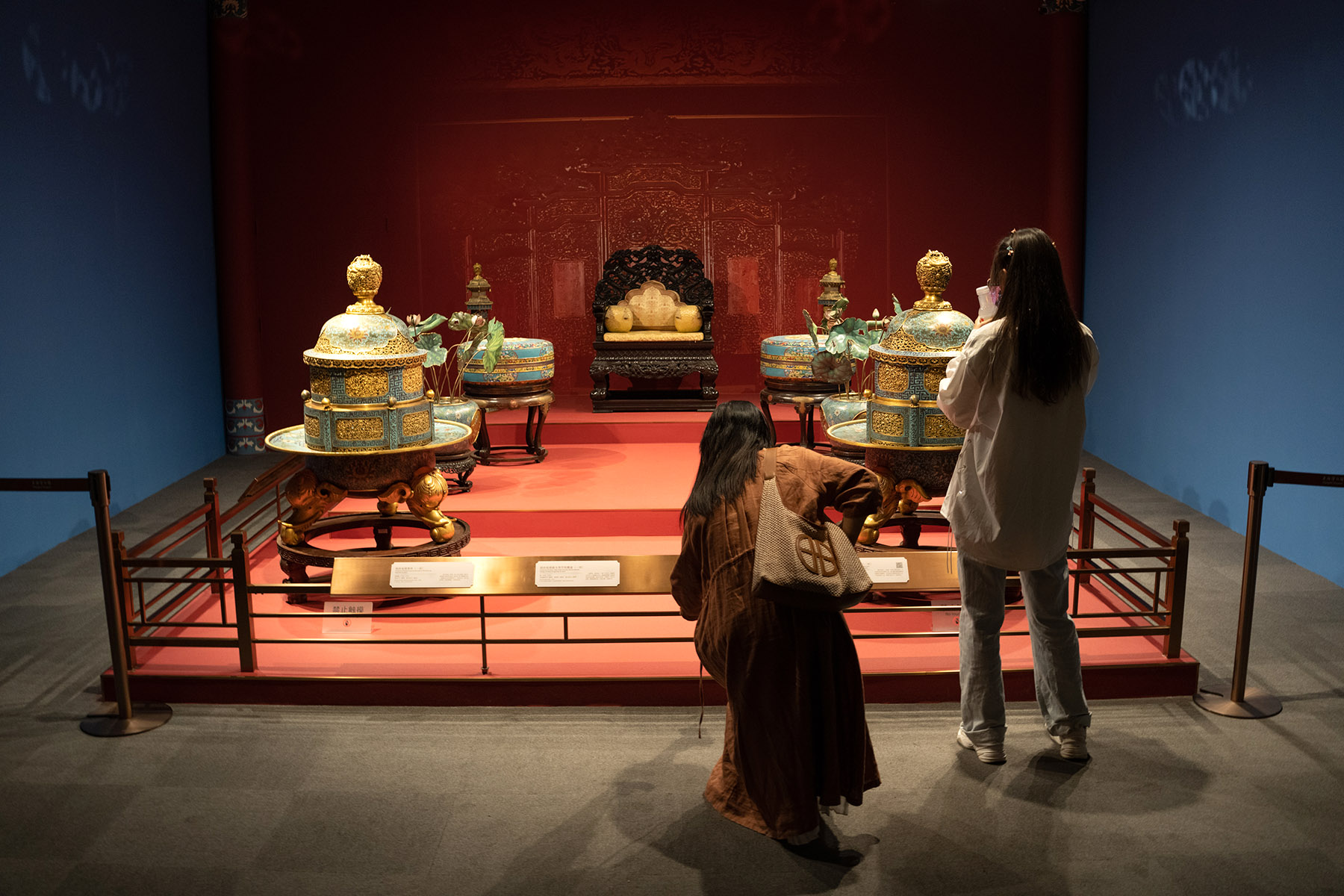
Among the 55 objects, pieces from the Kangxi period (1662-1722) and the Qianlong period (1736-1796) are especially important, as they demonstrate the high level of cloisonne craftsmanship at the imperial palace.
Cloisonne is a decorative technique that involves soldering delicate metal wires bent into the outline of a pattern onto a metal surface and filling in the spaces with enamel paste.
The earliest examples date back to the Mycenaean period in southern Europe 3,300 years ago, and in China, cloisonne was widely made during the Ming (1368-1644) and Qing (1644-1911) dynasties, when it was used to produce a large number of fine objects in a variety of forms with distinctive Chinese aesthetics.
It is known as jingtai lan — literally "the blue of the Jingtai period" — because Chinese cloisonne enamelware reached its technical peak during the reign of Emperor Jingtai (1450-1457) in the Ming Dynasty.
The Qing Dynasty marked another peak in craftsmanship. During the reign of Emperor Qianlong, the production of jingtai lan underwent unprecedented development.
An office for workshops dedicated to the production of imperial utensils was established under the administration of the Yangxin Dian (the Hall of Mental Cultivation) at the imperial court. One of these workshops made cloisonne.
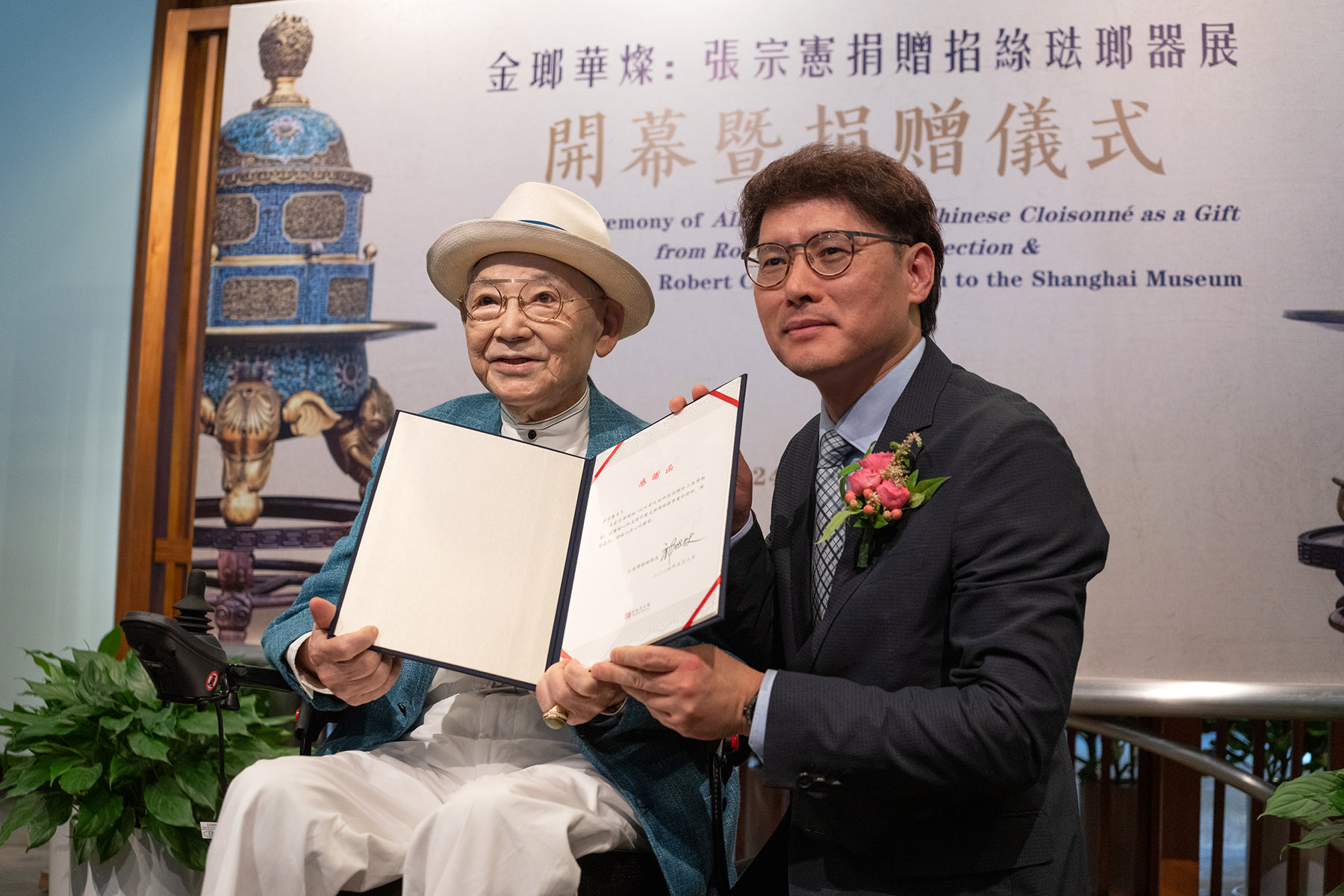
There were other important production centers for enamelware outside the capital, such as in Guangzhou, Guangdong province, and Yangzhou, Jiangsu province.
Chang is especially proud of the pair of incense burners with a flower-and-bird design and elephant-headshaped feet, that are among his gifts to the Shanghai Museum.
The two identical objects stand 127 centimeters high, and have a diameter of 91 centimeters.
ALSO READ: Tracing a golden legacy
"These are definitely representative cloisonne artworks and the most treasured objects among our collection. It would be hard to find such a large pair of fine enamel incense burners today, even at the Palace Museum," says Chu.
He adds that Chang's donations have laid a solid foundation for cloisonne research at the museum.
"We hope in the future we can take these objects on international tour, and introduce overseas visitors to the evolution of cloisonne enamel in China, and how it became a traditional handicraft favored by the emperors," Chu says.
Contact the writer at zhangkun@chinadaily.com.cn


